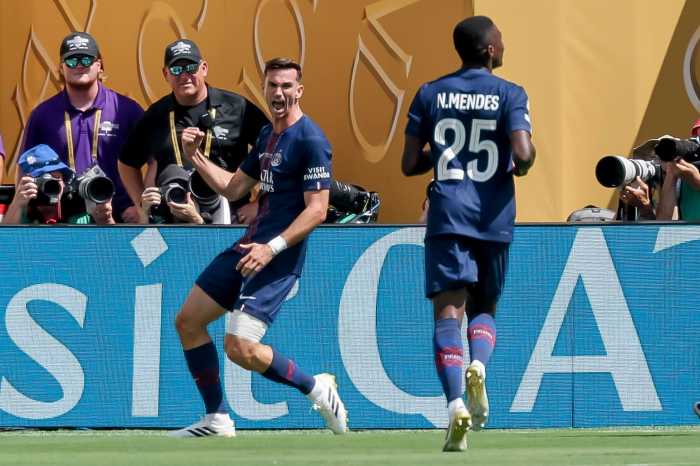
In 1885, a group of waiters and itinerant athletes formed a baseball team that entertained guests at the Argyle Hotel in Babylon, a summer resort for New York City’s elite that sat off what is now Sunrise Highway.
Gaining renown for their high level of play, they soon relocated and sought opportunity in a then-young American spectacle: professional baseball.
The team started darting around the United States and the Caribbean, taking on all comers in an effort to rise to the top of the game. But because of prevailing prejudices at the time, the men had to conceal their true identity in many of the venues where they plied their trade. They mumbled gibberish to one another during games to try to pass as foreigners. Since the public mistook the nonsense for Spanish, the team became known as the Cuban Giants.
That’s how America got its first African American baseball team. It would be far from its last.

In a year that was noted by most for pandemics and murder hornets, Their impact on American sports and the nation overall is difficult to overstate.
“It’s been 60 years since the last official Negro League game was played, yet people are more drawn to this story now than perhaps ever before,” Negro League Baseball Museum (NLBM) President Bob Kendrick said. “Really, it’s the story that drives it, that untold hue of baseball and Americana as seen through the eyes of these incredible athletes and the businessmen who made this possible.”
That story the museum strives to tell is one of great extremes, Kendrick explained, with both incredible adversity and incredible achievement in the face of those hardships.

“At its crux, it is a story of America at her worst, but it is also a story of America at her triumphant best,” Kendrick said. “That’s why people fell in love with this story of these courageous athletes who forged a glorious history in the midst of an inglorious time in American history. There’s something very inspirational about that and to me that’s why this story is not a sad story. It is a celebration of the power of the human spirit to persevere and prevail.”
The story of both the museum and the Negro Leagues themselves can’t be told without mentioning NLBM founder Buck O’Neil, a man so venerated in the sport that his biographer Joe Posanski simply called him “The Soul of Baseball.” O’Neil became a legend among legends in a career that spanned more than seven decades and saw him fill roles from player to coach to scout to manager across both the Negro Leagues and Major League baseball. For 16 years, from the museum’s 1990 founding until his death in 2006, he dedicated his life to preserving the legacy of the Negro Leagues.

Kendrick, who started working with the museum in 1993, said O’Neil’s positivity, talent for storytelling and infectious passion for the game made him the driving force behind the whole project.
“Buck was one of my very best friends,” Kendrick, who has served as the NLBM’s president since 2011, said. “I got bitten by the Buck bug, that’s just the kind of effect that Buck has. Once you met Buck, you fell in love with him. You just wanted to be on his team; the charisma, the energy and the passion that he had to build this museum and tell their stories so that they would not be forgotten. That drove him for the last 16 years of his life.”
It’s because of the work of men like O’Neil, Ken Burns and scores of tireless archivists and historians that those stories have been preserved to today. The exploits of players like Satchel Paige, who by his own best guess won around 2,000 games in a pitching career that stretched eons, and Josh Gibson, who among his 800-ish career home runs, is believed to have been the only man to ever hit a fair ball out of the old Yankee Stadium, have become so popular that they have passed into legend. Although records for the disparate Negro Leagues are patchy at best, Kendrick said that haze of mystery has only strengthened the myth surrounding that surrounds those players.

“Because there’s not a lot of documentation, they live through this almost mythical viewpoint,” Kendrick said. “When you talk about Gibson and Paige and [Cool Papa] Belle, they were larger than life. They were stars among stars.”
Whether it’s prejudice or simple skepticism, Kendrick noted there’s a layer of doubt in White America that hovers over the feats Negro Leagues best players are said to have accomplished. Black baseball was seen by many as lower quality than the whites-only MLB. But anybody who doubts the talent of those players, Kendrick said, need only read a little further into baseball’s history books for more context. When Negro League players barnstromed against teams of MLB players, they won far more games than they lost. When baseball began to integrate, the talent of those trailblazing Black ballplayers came to light right away: nine of the 11 National League MVPs from 1949-59 were former stars in the Negro Leagues.

When Jackie Robinson broke the MLB color barrier in 1947, Kendrick noted he brought with him the electrifying style of play that had been honed in the Negro Leagues over the years. True to the earliest days of the Cuban Giants, the fast-paced, bravado-filled brand of baseball played in the leagues stood in stark contrast to the slower “base-to-base” game of MLB.
“These guys embraced the entertainment value of baseball, which is why so many people flocked to those games,” Kendrick said. “You were going to see great baseball, but man were you going to be entertained.”
While Robinson’s foray into MLB marked a turning point in American history, it also signaled the beginning of a long and slow decline for the Negro Leagues themselves. As more and more MLB teams signed black ballplayers, the Negro Leagues began to fade in quality and popularity. The last major league in black baseball ceased operations in 1958, and the downfall of the leagues had a wide-ranging impact on both its players and the communities where it had once thrived.
“Jackie’s breaking of the color barrier was both the beginning and the end,” Kendrick said. “We think it marked the beginning of the Civil Rights Movement, but it also signaled the death knell of the Negro Leagues. There was no question that Major League Baseball essentially had a quota system in place, so there was a lot of great talent in the Negro Leagues talent that never got the opportunity.”

The NLBM itself came to life in the heart of Kansas City’s historic 18th & Vine District, a longtime hub of African American business in the city that had since fallen on hard times.
The museum’s presence in the district became part of an ongoing revitalization process that has seen millions in investments poured into 18th & Vine. Coincidentally, the NLBM’s effect on 18th & Vine is reminiscent of how the fortunes of the teams venerated within its halls mirrored the black communities in which they were situated.
“You can trace the rise and fall of the Negro Leagues with the demise of a lot of African American communities across this country,” Kendrick said. “Because essentially wherever you had successful Black baseball, you had thriving Black economies. So when we lost the Negro Leagues, we lost one of those catalysts that sparked the economic engine in many African American communities.”
Where once African Americans fielded entire leagues of professional baseball teams, in the 2019 season less than 8 percent of MLB players were African American, down from a high of nearly 19 percent in 1981. For years, baseball has searched for ways to increase African American youth participation in the sport, and Kendrick thinks the NLBM has a crucial role to play in advancing the legacy of Black baseball.
“Here in Kansas City, we have the Urban Youth Baseball Academy built right behind this museum,” Kendrick said. “When these kids are entering into our sport, they now get an opportunity to come here and understand that they have a tremendous legacy in this sport. I think that helps fuel their passion for the game. Over recent years we’ve been working lockstep with Major League Baseball and the player’s association to make sure the history of baseball is elevated, so that they do understand and ultimately embrace their legacy and their place in our sport.”

































